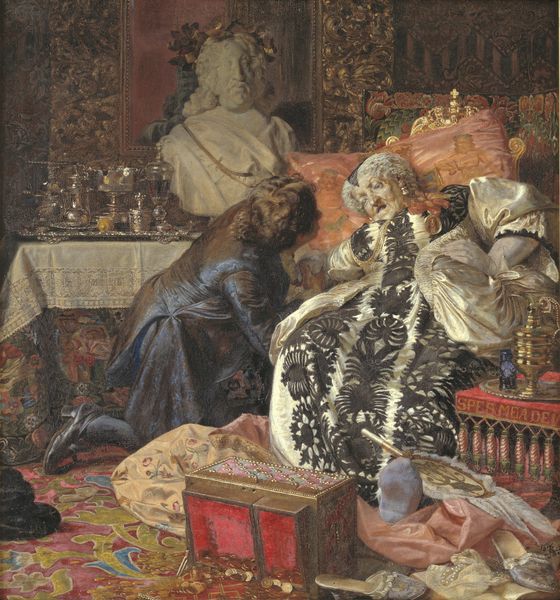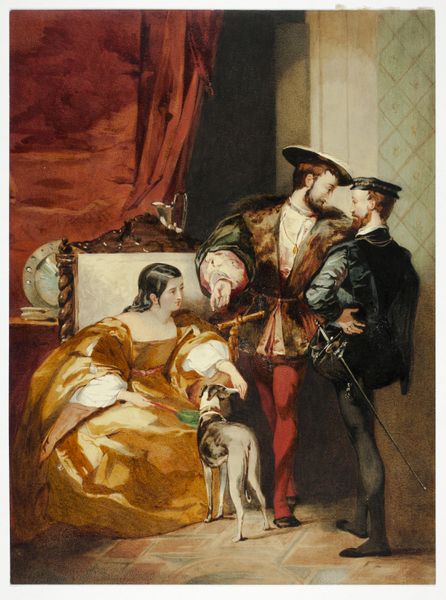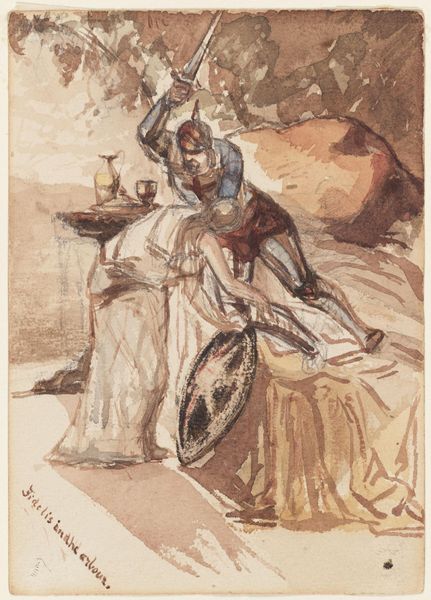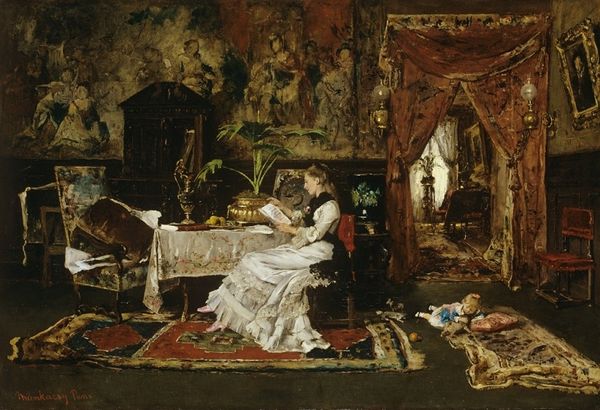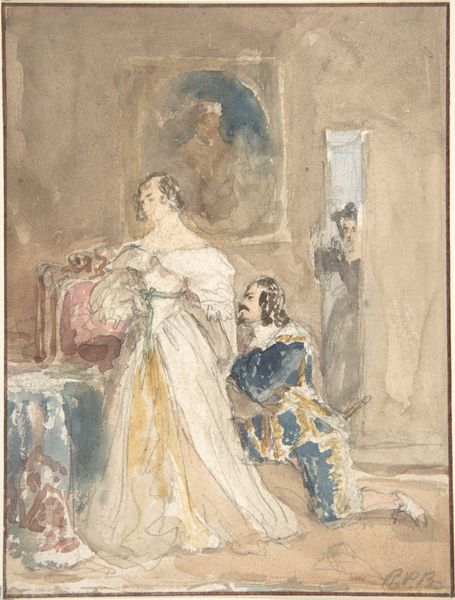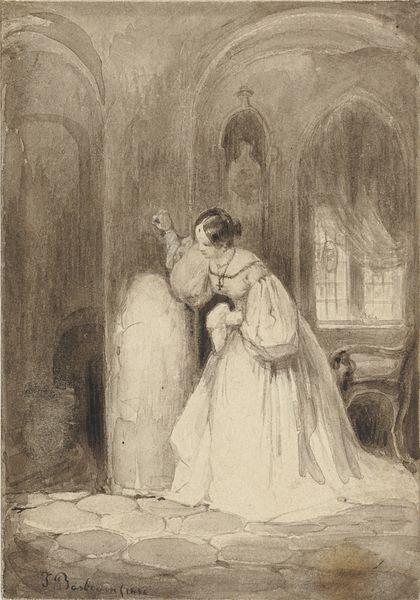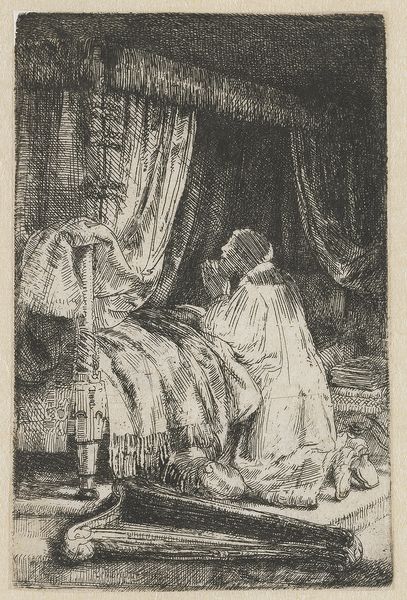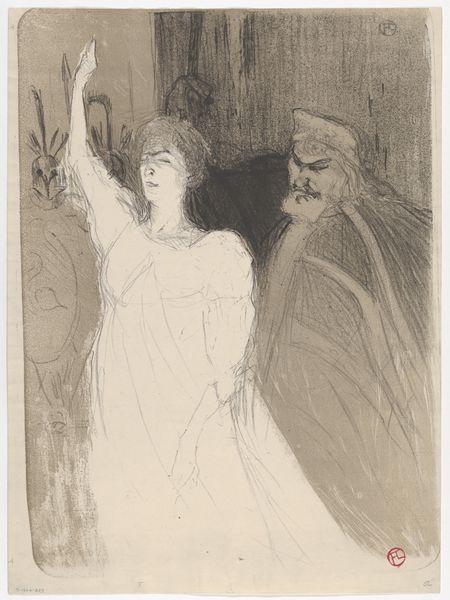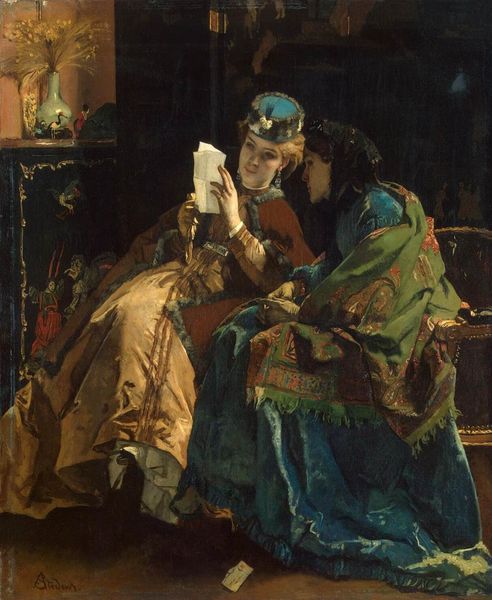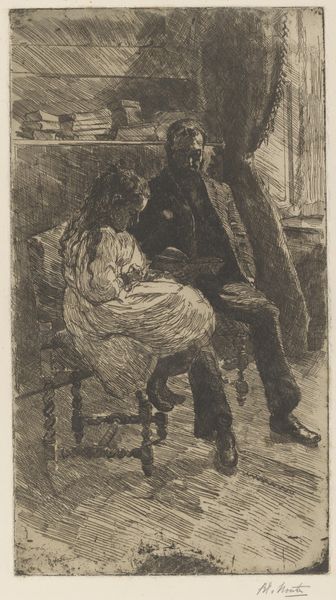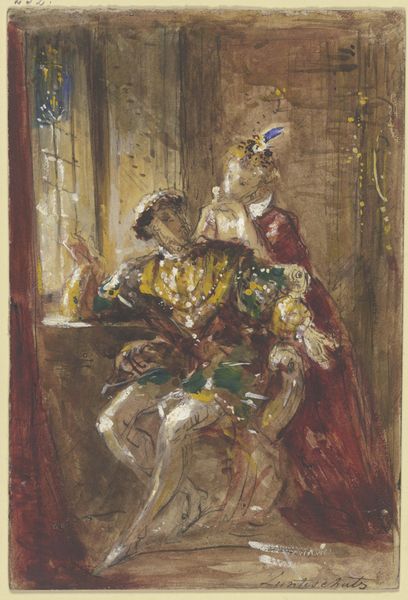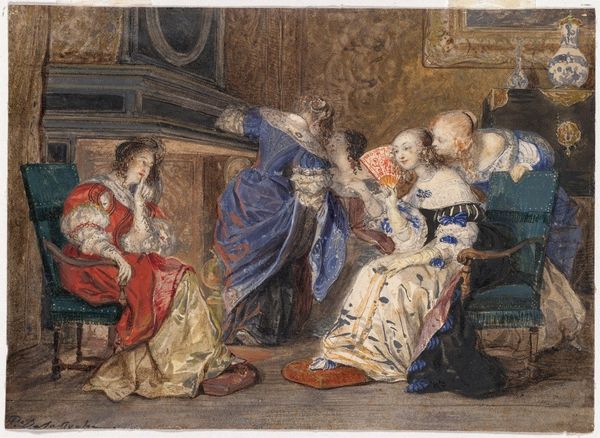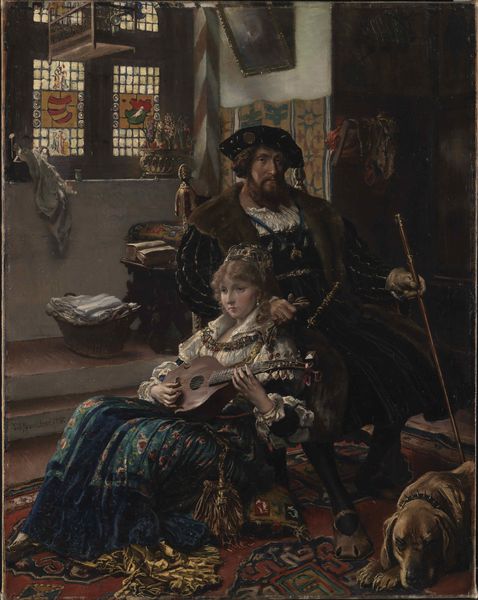
The Pardon Refused (from Sir Walter Scott's "Kenilworth") 1821 - 1834
0:00
0:00
drawing, print, gouache, watercolor
#
gouache
#
drawing
#
narrative-art
# print
#
gouache
#
watercolor
#
romanticism
#
men
#
history-painting
#
sword
#
watercolor
Dimensions: 9-5/8 x 7-1/2 in. (24.4 x 19.1 cm)
Copyright: Public Domain
Editor: Here we have Camille-Joseph-Etienne Roqueplan’s "The Pardon Refused (from Sir Walter Scott's 'Kenilworth')," likely completed sometime between 1821 and 1834. It appears to be a watercolor and gouache drawing. There’s such intense drama in this scene, a palpable power dynamic. What do you see when you look at this piece? Curator: The piece offers an intriguing insight into the public’s consumption of history in the Romantic era. Scott's novels, hugely popular, reshaped how people engaged with the past. Roqueplan translates that into a visual form, placing the viewer in the midst of a specific narrative moment, thick with emotional tension. How does this emphasis on a dramatic episode speak to the role of art within its specific social context? Editor: It’s interesting how history becomes spectacle, right? Like theater. Is that man in power actually refusing her request? What power did the museums and art galleries have at that time, and how do you think it shaped the social perspective of historical and narrative art like this? Curator: Precisely. Museums, still relatively nascent, played a vital role in codifying what constituted ‘national’ history and identity. This image, reproduced and disseminated through prints, allowed a broader public to consume a narrative imbued with certain moral and political undertones, further solidifying the museum’s, and by extension the establishment’s, influence. Do you think the somewhat sentimental, romanticized depiction of history is simply entertainment, or does it have a deeper function? Editor: I can see it shaping public opinion, reinforcing certain narratives about power and justice. The popularity of pieces like this would influence what other art got made, what stories were told, and whose perspectives were valued. Curator: Exactly! Roqueplan’s work then, serves not merely as an illustration, but as a telling artifact revealing how the historical novel, and by extension history itself, became a tool for shaping collective identity and social norms in 19th century. Editor: It really changes how I see history, and its interpretation in art. Thanks for shedding some light.
Comments
No comments
Be the first to comment and join the conversation on the ultimate creative platform.
